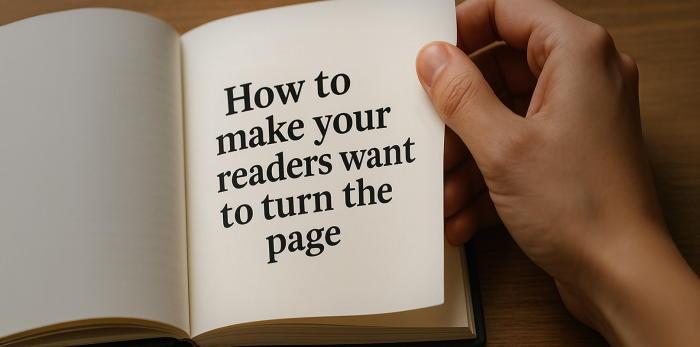At our April meeting, we focused on Creating a Fantastic First — that all-important first sentence, first paragraph, first page, and first chapter.
We explored some memorable first lines from both classics and recent bestsellers. Here are just a few:
![]()
When I think of my wife, I always think of her head.
Gone Girl. Gillian Flynn
.
When I wake up, the other side of the bed is cold.
The Hunger Games. Suzanne Collins
.
It happened every year, was almost a ritual.
And this was his eighty-second birthday.
The Girl with the Dragon Tattoo. Stieg Larsson
.
Either I die today, or the world changes.
White & Black. Anthony Wood
.
Who am I? And how, I wonder, will this story end?
The Notebook. Nicholas Sparks
.
Eleven years and two months old and I find out I’m adopted.
To Find a Home. Dot Hatfield
.
It was a bright cold day in April, and the clocks were striking thirteen.
1984. George Orwell
.
All this happened, more or less.
Slaughterhouse-Five. Kurt Vonnegut
.
Well, I’m going to tell you about the thing that happened,
and you can decide if it matters.
The Color Purple. Alice Walker
![]()
After discussing these examples, we turned our attention to five key elements every story should introduce as early as possible — the sooner, the better. These can be captured by asking five questions:
1. What’s the Hook?
This is often a compelling first line, but it might also be found in the first paragraph or page. It’s the moment that sparks curiosity or emotion and pulls the reader in.
2. What’s the Mood?
Here you establish the tone and personality of your story. Is it serious? Mysterious? Hilarious? Let the reader know what to expect right from the start.
3. Who’s the Center of Attention?
Introduce someone we’ll want to follow. Do they need to be likable? Opinions varied in our discussion, but we agreed on this: the character must be interesting — someone the reader can’t resist.
4. What’s at Stake?
Give the reader a glimpse of what’s at risk or what might happen. Even a subtle hint can set the stage for tension and investment.
5. What’s Not Adding Up?
Signal early on that something is off. It may not be obvious, but there should be a question or mystery that invites the reader to keep going.
Joyce Carol Oates once said, “The first sentence can’t be written until the final sentence is written.” In that same spirit, these Fantastic Firsts are often crafted not in the first draft, but in the final edits. They may be the last pieces of the puzzle, but they’re among the most important.
Next Assignment / Next Meeting.
For our next meeting on May 26, bring a first paragraph — from something you’ve written, something you’re writing, or something you’ve read and loved. We’ll take turns reading and discussing each one.
We look forward to seeing you there!
- The Sound of Silence - August 16, 2025
- You Don’t Say - August 1, 2025
- As You Know, Bob - July 25, 2025

